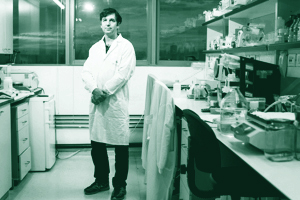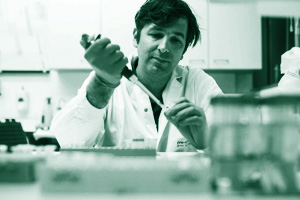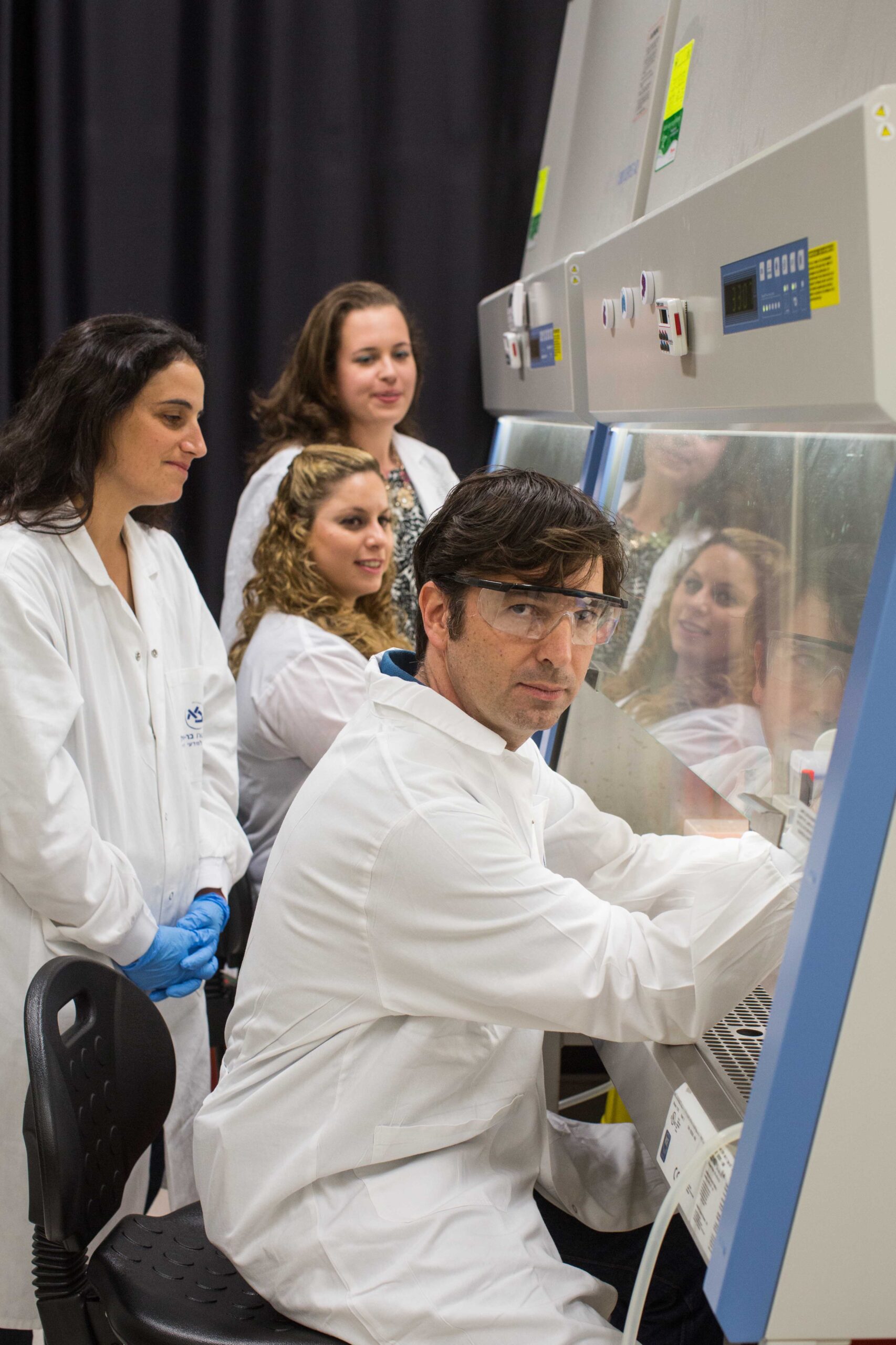One Small Cut, One Giant Leap for Medicine
Prof. Ayal Hendel in his Genome Editing and Gene Therapy Laboratory.
The Mina and Everard Goodman Faculty of Life Sciences
The Institute of Nanotechnology and Advanced Materials
One Small Cut,
One Giant Leap for Medicine
A pioneer in the field of CRISPR—a revolutionary technology that allows scientists to precisely cut and modify specific bits of DNA inside the cell—Prof. Ayal Hendel developed a treatment for a rare genetic disorder, transforming what a death sentence into hope for a normal life.
Patient, Heal Thyself
When David Vetter was born in 1971 with Severe Combined Immunodeficiency (SCID), a rare hereditary disorder that prevents the development of an immune system, doctors hoped his older sister could provide a bone-marrow transplant—then, as now, the only effective treatment for the disease. When, however, she turned out not to be a match, Vetter was forced to live inside an isolator until his death at age 12, earning him and the disease the iconic “Bubble Boy” nickname. Yet for most SCID patients who lack a matching bone-marrow donor—or for whom a transplant is unsuccessful, because the donated bone marrow attacks its new host—the average life span is much shorter: typically, under one year.
At least, it was until now. Genome-editing expert Prof. Ayal Hendel of the Mina and Everard Goodman Faculty of Life Sciences believes his new treatment for SCID will enable patients to literally heal themselves by using their own, “corrected” stem cells to generate a healthy immune system. Together with physicians at Sheba Hospital, Hendel has successfully edited a SCID patient’s blood stem cells using CRISPR, then returned them to his body; as a result, the patient reproduced new, “normal” T cells that fight germs and protect against disease. Now in the pre-clinical stage, Hendel’s breakthrough treatment is slated for human clinical trials in as little as 2-3 years. And if it’s successful—as was the case with the technology’s recent treatment of sickle-cell anemia—the phrase “Bubble Boy” will one day soon become only the stuff of movies, or at least of recent memory.
“More than anything, I hope this treatment for a rare genetic disease demonstrates that scientific innovation can go hand-in-hand with timeless Jewish values, including the sanctity of life above all else, and the idea that by saving a single person, we’re actually saving a whole world,” says Hendel. “With support from Jewish partners everywhere, Bar-Ilan can become an international leader in the fight against deadly genetic disease.”



An End to Sickle Cells: Editing Out a Deadly Disease
When CRISPR first arrived on the scene, Prof. Ayal Hendel—then a researcher at Stanford University School of Medicine—was part of a team that developed a means of protecting the structural integrity of the CRISPR’s RNA, the component that “guides” the technology toward the site on the gene that needs to be cut. The resulting patent opened the door for CRISPR’s use in treating monogenic diseases such as sickle-cell anemia, which affect nearly 20 million people worldwide. And indeed, Casgevy, the world’s first CRISPR-based medicine, was approved as a therapy for sickle-cell anemia by the FDA last year.